#Pompeu Fabra
Explore tagged Tumblr posts
Text

Universidad Pompeu Fabra en Barcelona, ESPAÑA
98 notes
·
View notes
Text
THIS IS HOW I FOUND OUT VOCALOID IS IBERIAN?????
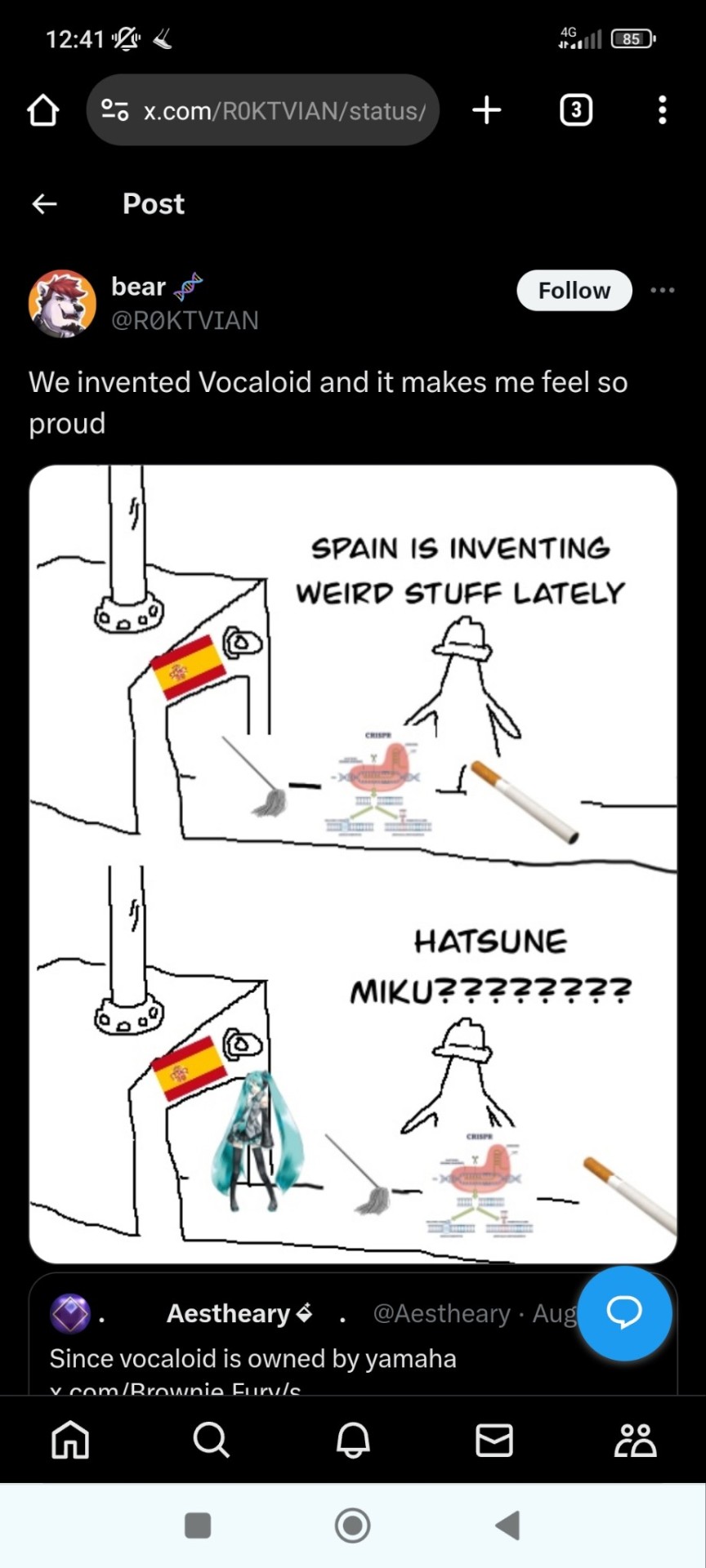
#apparently it was engineered in the pompeu fabra university ??????#hello ??????#catalan hatsune miku canon ??????
50 notes
·
View notes
Text

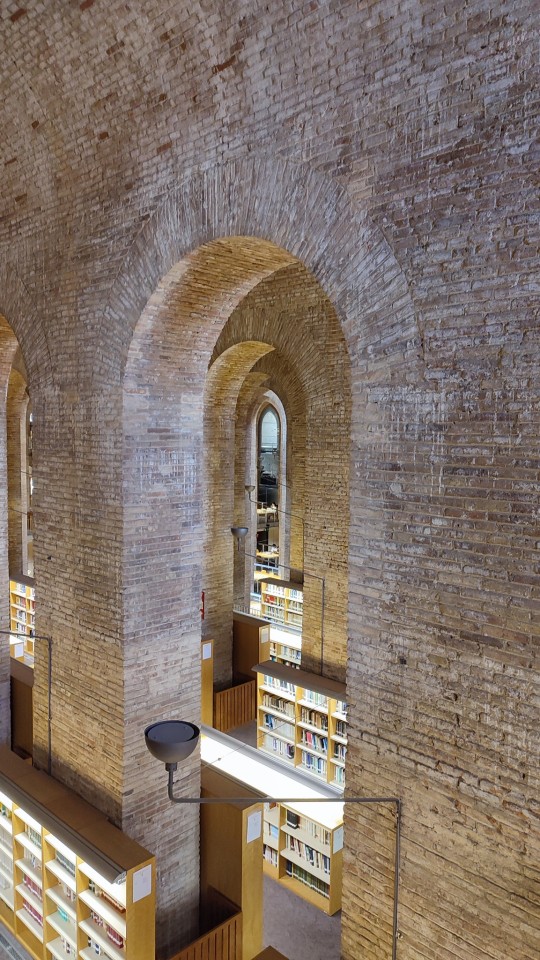


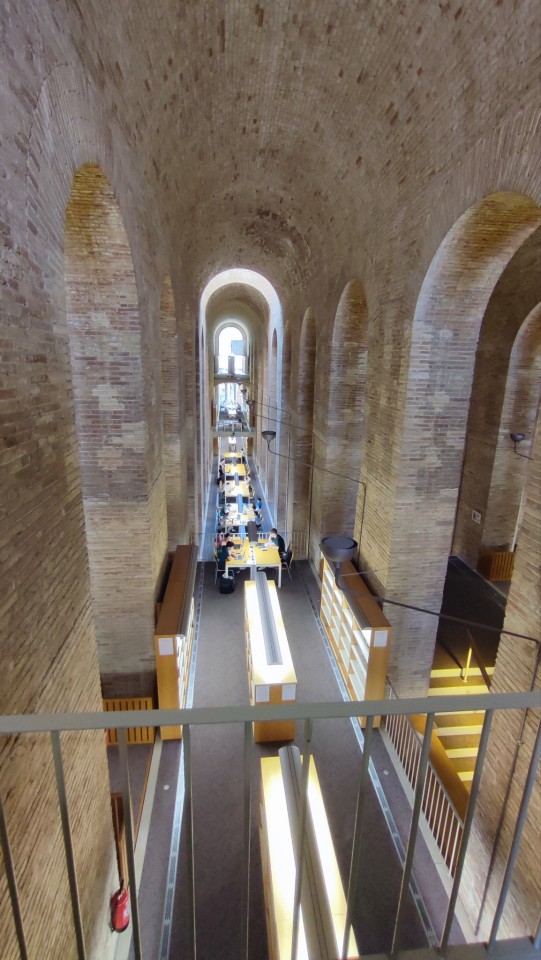
Az egyik legfantasztikusabb könyvtár az Universitat Pompeu Fabra Campus de la Ciutadellán van. A barcelonai világkiállításra készült a 19. században, tervezésében az akkor még fiatal Gaudi is részt vett, és a szomszédos parkban található vízeséshez szükséges több mint 15ezer köbméter vizet tartotta a rengeteg oszlop a magasban. Ezt alakítottak át valamivé, ami félúton van Khazad-Dúm csarnokai és egy templom között. Nézzétek meg, ha arra jártok.
11 notes
·
View notes
Text
And some of them they make into libraries...
http://www.pushpullbar.com/forums/showthread.php?3181-Barcelona-Dip%F2sit-de-les-Aig%FCes-Central-Library-of-the-University-of-Pompeu-Fabra
“The Dipòsit de les Aigües (Water deposit) was designed in 1874 … as a reservoir building to store water for the waterworks in the nearby Parc de la Ciutadella. Fontserè designed a structure with walls a metre thick, which supported arches four metres wide. In keeping with tradition, he perforated the walls in order to reduce the quantity of building materials and labour required. These openings run the height of the walls and are crowned with arches, causing the partitions in the walls to look rather like a series of independent pillars. Soon after the infrastructure of the city center got modernized and a new water distribution system was introduced, this building was no longer needed for it’s original purpose. Until the 80’s the building had been used for various things which gradually stuffed the magnificient space with partitions and additions. In 1992 it was decided to convert the space into the main library of the neighbouring UPF.




never not thinking about giant cisterns. THATS immanentizing the eschaton. when we get to heaven and its a bunch of giant wet concrete tunnels with vast columns holding up the ceiling, then you will see…
104K notes
·
View notes
Text
L’AMIC rep el Premi Pompeu Fabra de comunicació i noves tecnologies
En paraules del jurat, “l’Associació ha esdevingut un actor destacat en el panorama comunicatiu, impulsant iniciatives que fomenten la innovació, la creativitat i la qualitat professional” amic.info L’Associació de Mitjans d’Informació i Comunicació (AMIC) ha rebut el Premi Pompeu Fabra en la categoria de comunicació i noves tecnologies atorgat a l’Auditori del Palau de la Generalitat durant la…
#amic.info#Associació de Mitjans d’Informació i Comunicació#Carmina Crusafon#Josep Ritort#Núria Muñoz#Premi Pompeu Fabra#Ramon Grau#Zaida Torregrossa
0 notes
Note
Did you see the Mike Hatsune trend on twitter? So many Catalan Mikus!!!
I hadn't seen it! They're so cool!!
(And by the way, Miku is already Catalan 😉 the software used for her voice —Vocaloid— was created by the Pompeu Fabra University in Barcelona)
Say in the comments which one is your favourite!
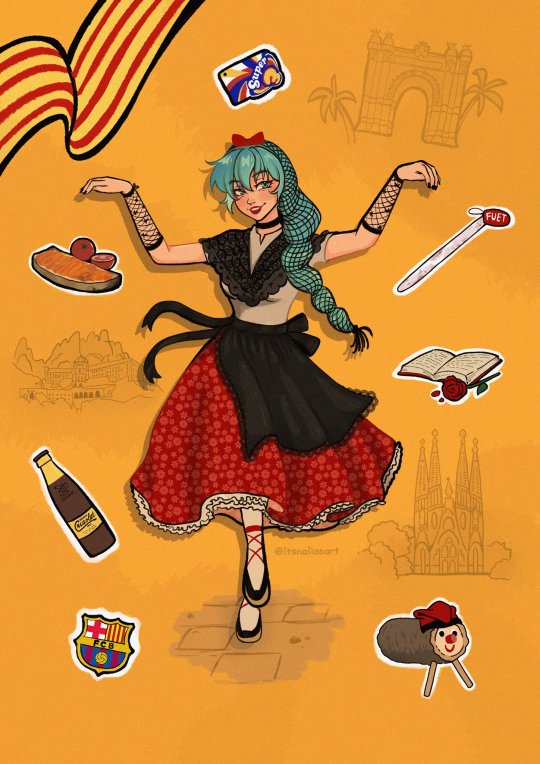
Miku dancing sardanes wearing traditional clothes (pubilla outfit). By @/itsnailasart

Miku in a calçotada! By @/miden808
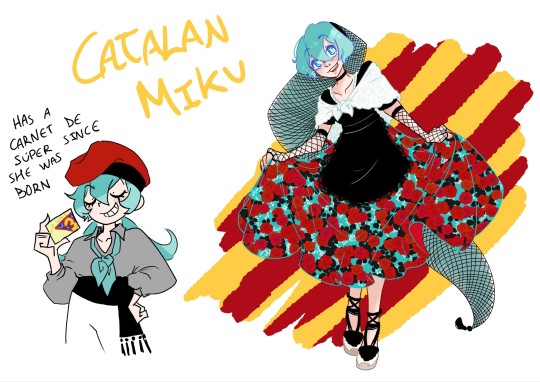
Miku castellera and pubilla Miku. By @/SpaceSpheal (also on Tumblr @spacespheal!)


Modern girl Miku who is a monitora de cau. By @/enosst

Miku castellera!! By @/TaySokka

Miku dancing sardanes. By @/NoddlsChikk

Miku with a Tió de Nadal. By @/gatomonogordo

Miku with the dragon, Mic and a calçot. By @/mewvy_y.

Miku dressed as castanyera! By @/lau_artwork
I've reached the photo limit for a Tumblr post but there's more! Say which one is your favourite in the tags. I can't choose just one but I'd say the 1st one, SpaceSpheal's, and the castanyera.
#arts#hatsune miku#miku#catalunya#catalonia#cultures#miku hatsune#vocaloid#culture#ethnography#folk fashion#traditional clothes#folk clothing#folk clothes#coses de la terra#art#digital art#world miku
1K notes
·
View notes
Text
the real way for a devil to win their heart/soul is a goddamn dictionary
Language thoughts always end up reminding me that Catalan doesn't get a standardized spelling rulebook* until 1913
Vincent's first language is Catalan, Spanish second, academic Latin, various neighbouring languages from traveling, and now daily use English. Their spelling must be fucking awful good lord. Poor lad is trying to piece together English spelling from spoken word with a primarily romance language background. They are Not having a good time.
*Not a dictionary! It was mostly grammar afaik. The dictionary wasn't published until 1931
#cmoooon yknow you wanna#pompeu fabra (the dictionary author) was already publishing other writing/language thingsss vin would recognise the name and everything#theyd get very emotional about someone engaging in their culture And youd fix their spelling#its a win win#this is stupid akjgsdf
8 notes
·
View notes
Text


Marijo Ribas, Bricks and cucumbers; Lichtenberg Studios exchange 2024
The second part of the exchange with the Lichtenberg Studios, was Marijo Ribas residence in Berlin. This residency has implemented a residency program that relates art to the reality of that neighborhood.
"I am interested in the spaces and how they carry ideology and symbolism. Memorials, public architecture and rural areas are linked to production and migration situations. My research in Lichtenberg began with the sculpture designed by Mies Van der Rohe, built in 1926 and demolished in 1935 by the Nazis. I was interested in the idea of how a memorial that no longer existed, still has a place in the memory. And since that I thought about the function of a memorial, does a memorial repair any damage?
Lichtenbeg has a rural and proletarian past, the most important migrant population during the 60-70, the “gastarbeiters” came from Vietnam. After the fall of the Berlin Wall there was no plan for many of the Vietnamese population living in Lichtenberg, who worked in semi-slavery conditions, subject to time, cohabitation and birth control. With the change in the economic model and the closure of many factories, some Vietnamese returned to their homeland and some decided to stay in Berlin, there is still a significant community, some important meeting points are the Pagoda temple and the Dong Xuan Center.
Food culture is also an identitarian subject, the ritual of harvest, share, sell and eat together. It is not a memorial, it’s ephemeral, but can be toxic or memorable. I used a vegetable, a cucumber, to construct my personal narrative around significant ideas, facts and spaces I found during my residency in Lichtenberg. The result of the research is linked to a series of studio and street photography crossing that ideas."
Marijo Ribas
La segona part de l'intercanvi amb Lichtenberg Studios, va ser la residència que va realitzar l'artista visual Marijo Ribas a Berlín. Aquesta residència implementa un programa de residències que posa en relació l'art amb la realitat d'aquesta barriada, oferint allotjament i mitjans per a explorar la zona.
"M'interessen els espais i com porten ideologia i simbolisme. Els monuments, l'arquitectura pública i les zones rurals que estan vinculades a situacions de producció i migració. La meva recerca a Lichtenberg va començar amb l'escultura dissenyada per Mies Van der Rohe, construïda el 1926 i enderrocada el 1935 pels nazis. Em va interessar la idea de com un memorial que ja no existia, encara té un lloc en la memòria. I ja que vaig pensar en la funció d'un memorial, reparava algun dany?
Lichtenbeg té un passat rural i proletari, la població migratòria més important durant els anys 60-70, els "gastarbeiters" provenien del Vietnam. Després de la caiguda del Mur de Berlín no hi havia cap pla per a molts vietnamites que vivien a Lichtenberg, que treballaven en condicions semiesclavistes, subjectes al temps, la convivència i el control de la natalitat. Amb el canvi en el model econòmic i el tancament de moltes fàbriques, alguns vietnamites van tornar a la seva pàtria i alguns van decidir quedar-se a Berlín, encara hi ha una comunitat significativa, alguns punts de trobada importants són el temple de Pagoda i el centre Dong Xuan.
La cultura alimentària és també un tema identitari, el ritual de la collita, compartir, vendre i menjar junts. No és un memorial, és efímer, però pot ser tòxic o memorable. Vaig utilitzar una verdura, un cogombre, per construir la meva narrativa personal al voltant d'idees, fets i espais significatius que vaig trobar durant la meva residència a Lichtenberg. El resultat de la recerca està vinculat a unes sèries d'estudi i fotografia de carrer, encreuament d'aquestes idees."
Marijo Ribas
Graduated in Fine Arts at the University of Barcelona (2006), Erasmus at HfG, Frankfurt (2005), Postgraduate in Design, Art and Society, Elisava Pompeu Fabra Barcelona (2008), Master in Artistic Productions and Research, University of Barcelona (2010) and first doctoral courses in Art History, University of Barcelona (2013).
Since 2003 I have participated in collective exhibitions and projects in public and private spaces such as Frac Corse, Ruse Gallery, Spazju Kreattiv Malta, MUU Kaapeli Helsinki, Circulo de Bellas Artes Madrid, Centre de Cultura Contemporania de Barcelona, Centre d’Art Santa Mònica, LABoral Centro de Arte, Es Baluard Museu, etc. I have done numerous residencies in production and research centers such as: Las Cigarreras Alicante, MediaLAB Prado Madrid, Edinburgh Sculpture Workshop or Belgrade A.I.R, among others.
Licenciada en Bellas Artes por la Universidad de Barcelona (2006), erasmus en HfG, Frankfurt (2005), Postgrado en Diseño, Arte y Sociedad, Elisava Pompeu Fabra Barcelona (2008), Máster en Producciones Artísticas e Investigación, Universidad de Barcelona (2010) y primeros cursos de doctorado en Historia del Arte, Universidad de Barcelona (2013).
Desde 2003 he participado en exposiciones y proyectos colectivos en espacios públicos y privados como Frac Corse, Ruse Gallery, Spazju Kreattiv Malta, MUU Kaapeli Helsinki, Circulo de Bellas Artes Madrid, Centre de Cultura Contemporania de Barcelona, Centre d’Art Santa Mònica, LABoral Centro de Arte, Es Baluard Museu, etc. He realizado numerosas residencias en centros de producción e investigación como: Las Cigarreras Alicante, MediaLAB Prado Madrid, Edinburgh Sculpture Workshop o Belgrade A.I.R, entre otras.
#art#contemporaryart#espaisantmarc#santmarcair#sant marc air#espai sant marc#berlin#lichtenberg#lichtenbergstudios#artist in residence#residence#air#marijoribas#exchange
59 notes
·
View notes
Text
Separated by 10,000 years but linked by DNA! A 9,000-year-old skeleton's DNA was tested, and it was concluded that a living relative was teaching history about a half mile away, tracing back nearly 300 generations!

I remember reading about Cheddar man before, but not about his descendent. So cool!
An ancient European hunter-gatherer man had dark skin and blue eyes, a new genetic analysis has revealed.
The analysis of the man, who lived in modern-day Spain only about 7,000 years ago, shows light-skin genes in Europeans evolved much more recently than previously thought.
The findings, which were detailed today (Jan. 26) in the journal Nature, also hint that light skin evolved not to adjust to the lower-light conditions in Europe compared with Africa, but instead to the new diet that emerged after the agricultural revolution, said study co-author Carles Lalueza-Fox, a paleogenomics researcher at Pompeu Fabra University in Spain.
5 notes
·
View notes
Text
Despite being made only for English and Japanese vocals, the original VOCALOID software (and in particular the Daisy Project prototype) was mainly researched and developed in Barcelona, Spain, at Pompeu Fabra University, with financing and collaboration from YAMAHA.

(source: Vocaloid Wiki)
56 notes
·
View notes
Text
On the job market in economics
Took some time, but I'm on the job market this year (2024-2025)!

My name is Amil Camilo Moore and I'm an experimental economist doing a Ph.D. in economics (sixth year) at Universitat Pompeu Fabra.
My research is in behavioral and experimental economics as well as topics in political economy - I specialize in doing large-scale experiments and taking advantage of innovations in big data and machine learning to get better insights into human behavior, but I am interested in big questions, like how people generally play games and what makes people want to form fair institutions.
My job market paper is Understanding Human Behavior via Similarity: A Geometric and Behavioral Rules-based Approach to Games which is co-authored with Fabrizio Germano and Rosemarie Nagel. You can find out more about me by clicking here or more about my other projects by clicking here.
Feel free to contact me at amilcar.camilo [at] upf.edu - you can find my CV by clicking here.
2 notes
·
View notes
Note
What’s vocaloid \:3 ?
WOOh boy do I got a Wikipedia copy paste for you

Vocaloid (ボーカロイド, Bōkaroido) is a singing voice synthesizer software product. Its signal processing part was developed through a joint research project between Yamaha Corporation and the Music Technology Group in Universitat Pompeu Fabra, Barcelona.[1] The software was ultimately developed into the commercial product "Vocaloid" that was released in 2004.
Basically, vocaloid is a program used to create songs using different voices (or voicebanks in particular) and tuning them to create music

Hope that helps pookie
3 notes
·
View notes
Text

Buscando en el baúl de los recuerdos, uhúhu... 🎵🎵
(Va de lenguas nazionalistas)
¿Por qué no encontramos hasta 1.510 ninguna Academia de las letras, o de la lengua Catalana? ¿Será que dicha lengua no existía?
Antoni Elías i Rubert, en 1817, como secretario de la “Academia de las Bones LLetres de Barcelona”, pidió a todos los miembros componentes de dicha Academia, si le podían conseguir una Gramática antigua de la lengua catalana. No pudiendo conseguir ninguna, encargó a Pere Pau Ballot que redactara una gramática de la llenga Catalana.
¿Por qué será que todos los miembros y el secretario de La Academia de las Bonas Lletras de Barcelona, no pudiera encontrar una sola gramática de la llengo catalana, en 1817? ¿Será por que no habían tenido ninguna gramática hasta esta fecha?
Antoni de Bofarull y Mariano Flotats (catedráticos de la Universidad de Barcelona y archiveros de la corona de Aragón) en 1848, tradujeron al castellano y editaron “la Historia de la Vida del Monarca don Jaime I de Aragón, el Conquistador”. Como hacen constar partiendo de la escrita por el mismo monarca en lemosín.
Pompeu Fabra, en 1.913, editó el “Diccionari de la Llenga catalana”. (Diccionario que había robado a mossen Antonio Mª Alcover y Sureda, representante de las diócesis de Baleares y al representante de las diócesis de Valencia padre jesuita Luis Fullana Mira). Diccionario, que tenía que haber editado el propio Pompeu Fabra, como diccionario de las Lenguas Valenciana-Catalana-Balear, que habían patrocinado las Diócesis de Valencia, Cataluña y Baleares.
¿Por qué lo tenían que denominar valenciano, catalán, balear, si todo era un mismo idioma, el catalán?
Manuel Azaña, presidente de la república española, el 21 de noviembre de 1936, ordenó la creación de la cátedra de la lengua Valenciana. ¿Porque no ordenó la de la lengua catalana?
¿Por qué será que tantos escritores en tantos escritos, gramáticas y diccionarios dicen y afirman ser de las lenguas lemosina, Valenciana, Mallorquina, o Menorquina, y tan poquísimos lo dicen, o afirman de la catalana?
Lo que no puede ser, no puede ser, y además es imposible.
#palabras#citas#frases#citas en español#textos#escritos#escrituras#notas#jajaja#memes#words#quotes#phrases#language#poetry#poem#entity#dialect#conlang#photography#wine#España#Spain#funny#cringe#summer#verano#football#barcelona#gay
6 notes
·
View notes
Text
València está sufriendo ahora mismo, al igual que muchos de los pueblos y comunidades afectadas.
Hay que mantenerse alerta y ayudar con lo que se pueda. Es importante mantener la Dana como asunto relevante y que no se quede en el olvido después de las próximas semanas.
Actualmente España se está volcando para ayudar. Distintas universidades en todo el país (como la UAM y la Pompeu Fabra), y muchas otras localidades están ofreciendo puntos de recogida de donaciones tanto monetarias como físicas.
Lo que se busca más es:
Productos de limpieza
Agua potable
Productos sanitarios (ancianos, niños)
Mascarillas
Ropa impermeable, mantas, toallas
Comida (sin azúcar, sin gluten)
Pienso para animales
Y por supuesto que las donaciones monetarias también ayudan.
Si puedes donar en tu universidad o ciudad te animo enormemente.
Ànims València, tots estem amb vosaltres.
How to help the people in Spain
As you may have seen online, Spain is going through a flash flood since October 29. It's mainly affected the Community of Valencia but also some parts of the south-west and the cold drop is now moving to the north-east.


95 bodies have been found at the time I'm writing this (edit: 205 now), there's still people missing and entire towns are isolated as they don't have electricity and their roads have been destroyed. A lot of people don't have tap water or any means to cook. If you're wondering why people didn't evacuate beforehand, it's because authorities didn't care enough to warn people so technically everyone had to go to work and school. Though politicians should be held accountable, the most important thing at the moment is to help those in need. So here's some ways you can help both people and animals that have been affected.
NGOs and fundraisers
MOST NEEDED AT THE MOMENT: You can donate to Valencia's food bank by making a transfer to this bank account: ES86 2100 2806 6402 0009 8998.
Horta Sud is a county in Valencia that has been the most affected by the floodings. People are leaving their houses because they're scared of the infrastructure getting damaged and even walking by foot to Valencia capital to get food. You can help those families via this gofundme.
Hambre Cero is a Spanish non-profit that was founded after the earthquakes in Indonesia. They will be giving food to those who need it. Here's different ways you can donate.
Cáritas is a Spanish organization formed by different Catholic non-profits. They'll be giving food and also helping clean up the towns. You can donate here by clicking the button where it says "donar".
This gofundme is joining efforts with the town hall of Valencia to help people who have lost their homes.
Una copa por Valencia ("a drink to Valencia") is a campaign organized by Spanish influencer David Aliagas. The idea behind it is to donate the amount of money you would spend on drinks on a night out. He'll be joining effort with local non-profits. You can help here.
Here's a thread of artists that are accepting commissions in exchange for donations for Valencia.
Spanish Kpop fans are organizing a collective fundraiser.
Help people directly
Help Sara, Steven and Bruno rebuild their home in Valencia.
Help this high school teacher buy a new car to get back to work.
Raúl was about to open his barbershop on October 31 but it was destroyed by the flood. Please help him get his dream back.
Help the neighbours of Aldaia (Valencia) rebuild their homes.
This artist has been affected by the floods and lost their car. They've opened emergency commissions.
You can help rebuild the town of Letur (Albacete) by donating to this gofundme that's directly coordinated with the town hall.
Rebeca is a seamstress. Her studio was both her workplace and a place were came together for a sewing club in the afternoons. It was destroyed by the flood. You can help her rebuild it here
Animal shelters
Refugio Minipow was home to 50 rabbits and guinea pigs. Thankfully, the owners were able to move all the animals to their homes and those of their neighbors, though the shelter itself has been destroyed right after recent renovations. There's different ways to donate here.
El Refugio de María a dog shelter in Sueca (Valencia), is completely flooded, leaving the dogs visibly distressed, as shown here. You can donate to PayPal [email protected]
Modepran is a dog shelter in Campanar (Valencia) where infrastructure damage has left some dogs without a proper sleeping area. You can donate through PayPal here.
Gatos Campo de Gibraltar is a cat shelter in Los Barrios (Cádiz). need of assistance for relocating cats to new homes and rebuilding damaged facilities. You can donate to their PayPal [email protected]
Protectora San Antón is an animal shelter for cats and dogs in Jerez de la Frontera (Cádiz). The entire place is flooded and the animals don't have a comfortable place to sleep in. Cats can't even walk on the ground. You can donate to their PayPal [email protected]
I'll be adding more as I find them. Thank you everyone for your help.
Edit: adding this because I keep seeing people on Twitter and Tiktok say it makes no sense to give money to people in a "first world" country. I need you people to understand that living in a western country doesn't equal politicians caring about you.
This whole thing started because politicians weren't doing their job and they're still not doing it. People (literal civilians, not firefighters or policemen) are literally pulling bodies from under cars and putting them inside the trunks so children in the affected areas don't see them. There's underground parkings still flooded by water and we don't know how many people may be inside them.
France offered to send us 200 firemen and the Ministry of Interior literally REFUSED. Some of these French firemen came on their own anyway. But that's what our politicians are doing. Negating help and pointing fingers at each other so they don't seem guilty.
#Spain#Valencia#natural disasters#españa#climate catastrophe#signal boost#climate crisis#flash floods#please share#important#emergency#humanitarian aid#help#mutual aid#urgent
4K notes
·
View notes
Text
Did you know Spain is home to some of Europe's oldest and most prestigious universities? 🏛️✨ The University of Salamanca, founded in 1218, is the oldest in the Hispanic world 📚, while the University of Barcelona 🎓 has been shaping brilliant minds since 1450! 💡
From historic halls to modern classrooms, Spain's top universities are academic powerhouses 💥. With 10+ world-class institutions across 🌆 Barcelona, 🏙️ Madrid, 🌊 Valencia & beyond — there's a perfect spot for every student!
💻 Engineering lovers excel at the Technical University of Madrid ⚙️, while social science stars shine at Pompeu Fabra 🌍 — many with English-taught programs for international students like YOU 🌟.
Ready to join 76,000+ diverse students 🎉 and kickstart your Spanish academic journey? 🚀 DM Admissify today! 💌
0 notes
